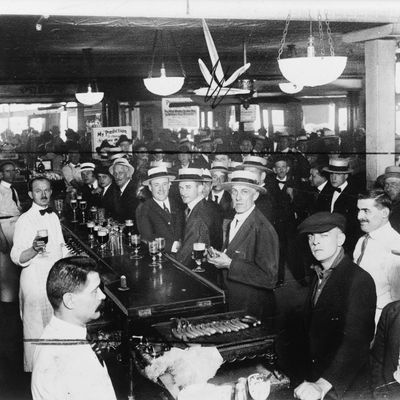
Do you ever have one of those days where one isolated frustration leads to another, and then another, until they all bleed together and your whole life starts to seem like one long series of small misfortunes? It happened to me last week: Toward the end of already-bad day, I tripped over my own shoelaces and skinned my knee on the sidewalk, and my reaction — I can say this in hindsight — was much angrier and more dramatic than a shoelace-trip called for. So when I received an email the following day with some positive career news, the boost was that much stronger. I wasn’t just happy; I was over the moon. In the span of just 24 hours, I’d swung from one end of the emotional spectrum to the other.
It sounds exhausting, but these frequent ups and downs, for better or worse, are just a normal part of modern life. The language of the internet, full of hot takes and epic takedowns and things that promise to blow our minds, hardly encourages us to contain ourselves or dial down our self-expression; nor does the polarized rhetoric of the current political scene. I once interviewed an elderly nun who told me that her secret to lasting contentment was “temperance”: “It protects you from being consumed by your passions,” she said. But in this age of extremes, temperance — defined by Merriam-Webster as “habitual moderation in the indulgence of the appetites or passions” — isn’t an easy sell. As psychology writer Oliver Burkeman argued in a recent Guardian column, moderation is too often seen as “intrinsically lily-livered, a lukewarm compromise between more resolute extremes.”
This wasn’t always the case, though. The history of temperance is a long one — and tracing its rise and fall shows that, with a little bit of a makeover, it may have a place in these times after all.
Back in the fifth century B.C., ancient Greek philosophers considered the trait to be a way of achieving harmony through self-knowledge. Throughout the millennia, numerous religious traditions have adopted it as a core tenet: In Buddhism, two of the five precepts (those forbidding drunkenness and sexual misconduct) demand temperance; Hinduism has the concept of dama, or self-restraint; temperance is one of the four cardinal virtues of the Catholic Church. In the 13th century, Christian theologian and philosopher Thomas Aquinas described it as “simply a disposition of the mind which binds the passion.”
Roughly half a millennium later, the Protestant revival that spread throughout the U.S. in the 18th and 19th centuries, known as the Great Second Awakening, pushed concerns over sin and self-control to the forefront of American culture. But with the advent of the resulting temperance movement, which advocated for the near or total abstention from alcohol, the term “temperance” became inextricably linked to Prohibiton, and took on a decidedly different, more strident flavor. What had once been seen as a virtue became, during the 1920s, a word for the harsh denial of bodily pleasures.
This would begin to change after the Second World War, when humanist psychologists like Abraham Maslow began taking an interest in the more positive aspects of human nature. During this time, the idea of using religious ethics as a code for behavior began to fall out of fashion in favor of individual self-expression.
Fast-forward a few decades to 1998, when positive psychology emerged on the scene. Its founder, Martin Seligman, was among the first to connect the field of psychology, with all its scientific trappings, to religious virtue ethics, a school of thought that focuses on moral traits over moral actions. Seligman designated temperance as one of the six core values of his burgeoning field, emphasizing its universality rather than its link to any one specific movement or group. Around the same time, author and psychologist Daniel Goleman included temperance in his broader framework of emotional intelligence. In his book Emotional Intelligence: Why it Can Matter More Than IQ, he wrote:
When emotions are too muted they create dullness and distance; when out of control, too extreme and persistent, they become pathological, as in immobilizing depression, overwhelming anxiety, raging anger, manic agitation. Indeed, keeping our distressing emotions in check is the key to emotional well-being; extremes—emotions that wax too intensely or for too long—undermine our stability. Just as there is a steady murmur of background thoughts in the mind, there is a constant emotional hum.
While the term hasn’t totally shaken its puritanical roots, its incorporation into modern psychology has given it a more contemporary cast — and a more contemporary way to apply it to our lives. Temperance is character; it’s emotional intelligence; it’s even, one could argue, a sense of courage. “True moderation doesn’t mean you’ve got to split the difference between your opinions and other people’s,” as Burkeman put it in the Guardian, but “it does mean conceding that nobody’s unreachable or irredeemable … it’s far more tough-minded than the low-effort option of just writing off the opposition.” There’s a lot to be said for expressing yourself, but there’s also an upside to keeping that expression in check — namely, that it can help you to better understand others, and to put the events of your own life in healthy perspective. It’s something I’ll keep in mind even as I double-knot all my shoelaces.




